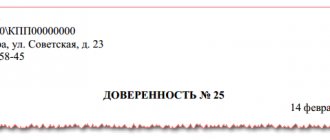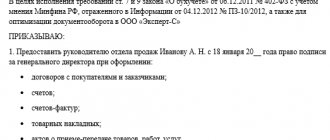In the course of its activities, an organization draws up a wide variety of documents, each of which carries its own meaning. Correct filling, details, and completeness of the information provided are regulated by law. Small organizations receive significant concessions from the tax service in accounting and reporting. Larger companies bear the entire tax burden. Who can sign primary documents and other types, how to properly draw them up and reflect them in accounting - this and other information will be discussed in this article.
Types of documents in an organization
Companies carry out business transactions every day, which must be immediately reflected in accounting, management and tax accounting. What are primary documents? This is precisely a reflection of these operations, also serving as proof that they took place. Then, for the purposes of analysis, systematization, control, forecasting and for the implementation of other economic procedures, all documents on transactions are registered in special directories and journals - accounting registers. And at the end of the reporting period, based on information about all operations, reporting documentation is prepared, which is the final reflection of the company’s activities for a certain period.
What is a primary document
The essence of the primary document is to record the fact of the transaction performed. The document is issued at the time of its completion or immediately after it. It reflects a number of details necessary to confirm the reality of the operation, identify the persons involved in it, as well as its composition. The organization must comply with all requirements set by law and regulatory authorities regarding primary documentation. The requirements also include the question of who can sign primary documents. The legislation has issued enough instructions, regulations and laws. The most important legal act regulating the registration of the primary registration is considered to be Art. 9 402-FZ “On Accounting”.
Signature of primary accounting documents
Companies can use any type of electronic signature provided for by Federal Law No. 63-FZ dated 04/06/2011 (hereinafter referred to as Law No. 63-FZ).
In the commented letter of the Ministry of Finance of Russia dated 03/05/2019 No. 03-03-07/14313, officials explain that, according to Article 6 of Law No. 63-FZ, a document that is signed with a simple electronic signature or an enhanced unqualified electronic signature is recognized as electronic and equivalent to a paper document , signed with a handwritten signature. Thus, when preparing primary accounting documents, business parties can organize electronic document flow using a simple electronic signature.
Law No. 63-FZ designates three types of electronic signatures, which generally differ in the degree of security and complexity of obtaining: a simple electronic signature; enhanced unqualified electronic signature; enhanced qualified electronic signature.
For accounting purposes, electronic primary documents may be certified with any of the three types of signatures provided for by Law No. 63-FZ.
There are restrictions for tax accounting. Information signed with an enhanced qualified electronic signature is recognized as an electronic document equivalent to a paper document signed with a handwritten signature.
Expenses that are taken into account when calculating income tax must be documented, in particular, by primary accounting documents (Article 313 of the Tax Code of the Russian Federation). As previously mentioned, the “primary document” must contain mandatory details, one of which is the personal signature of the persons responsible for processing the transaction. The primary document compiled in electronic form is signed with an electronic signature.
Thus, if the primary accounting document complies with the requirements of Law No. 402-FZ, and is also signed with an electronic signature, it can be the basis for generating tax accounting data, as well as confirm the company’s income and expenses for income tax purposes.
Electronic documents can also be signed with a simple electronic signature or an enhanced unqualified electronic signature, if this is provided for by the agreement between the participants in the electronic interaction. But in order to write off tax expenses on the basis of a “primary document” signed with a simple or unqualified signature, the agreement with the counterparty must stipulate the procedure for verifying the signature.
Regarding the signing of electronic invoices (clause 6 of Article 169 of the Tax Code of the Russian Federation), as well as when carrying out electronic interaction with tax authorities, it is necessary to use only an enhanced qualified electronic signature.
Examples of primary documentation
Every day the company performs certain actions: purchases goods, issues invoices, ships products, pays for purchases and taxes, receives and spends funds at the cash register. All these operations are documented with primary documents. To accurately reflect the listed actions in accounting, the following forms of documents are used:
- TORG-12 or waybill;
- invoice;
- incoming and outgoing cash orders;
- acts of completed work and services;
- acts of transfer of material assets;
- waybill;
- payment orders and bank statements;
- requirement for the issuance of material assets.
To this list you can add quite a lot of examples of primary documentation used in the company. Its main difference from accounting registers and reporting is the execution of the document during the operation or with a slight delay.
Regulations
Samples of primary documents are approved by the State Statistics Committee, the Ministry of Finance and the law on accounting. Regional requirements and regulations are also being issued. The most important legislative act regulating the work of an accountant is 402-FZ. Art. 9 describes in detail the rules for maintaining documentation.
Legislative bodies almost quarterly issue regular amendments to existing provisions, new regulations, and publish changes in accounting and reporting. That is why accountants constantly improve their qualifications, subscribe to specialized thematic publications and try to keep abreast of all the news in tax and accounting. Failure to comply can result in large fines, extensive redactions of existing records, and other penalties.
Document details
The legislation provides for mandatory details of primary documents that must be indicated by the organization. Their presence determines whether the documents will be taken into account in the final reporting when deducting amounts from the tax base, whether the fact of a business transaction will be accepted, and whether the Federal Tax Service will have any claims regarding the legality of the transactions.
Mandatory details of primary documents include the following information:
- names of the supplier, buyer, consignee and payer for transportation;
- bank details, TIN, physical and legal address of companies;
- document number and date;
- items that were moved, purchased or sold during the transaction;
- units of measurement, quantitative and cost expression of nomenclature;
- the total amount for all positions in the document;
- signatures, positions, transcripts of signatures of responsible persons;
- make, car number, driver’s details during transportation;
- number of seats, weight and category of cargo transported;
- the basis for issuing the document, the number and date of the contract, information about specifications, certificates, examinations, if any.
Answers to common questions
Question: If the chief accountant is the founder of the company, does he have the right to sign contracts?
Answer: In this case, he can sign documents only if he has a power of attorney for the right to sign. This power of attorney is issued by the head of the enterprise. In other cases, only the manager can sign contracts on behalf of the company. Other rules may also be provided for by the company's Charter.
Question: What color pen can I use to sign primary documents and invoices?
Answer: According to general rules, there are no requirements for ink color. All entries in primary documents can be made in ink, ballpoint pen or chemical pencil. However, it is still better to use blue, purple or black ink.
Question: There is no chief accountant in our organization, how should the right to sign a person of a third-party company performing our accounting be documented?
Answer: To do this, the contract for the provision of accounting services must stipulate the following:
- The powers of the chief accountant are transferred to a third party.
- A person who is a representative of a third-party company and has the right to sign documents for the chief accountant. You should indicate his full name, passport details, and the position he holds in a third-party organization.
- The right to sign which documents is transferred to a third party company under the contract.
If such an agreement is concluded and all the specified points are specified in it, then when signing the documents you will need to indicate the following: “Chief Accountant (according to the agreement dated ___ No. ___)”, where the number and date of the agreement concluded with a third-party company will be indicated.
Who can sign primary documents
Considerable attention is paid to signing documents. It is very important that the persons who certify the primary document are authorized to perform this action. Another mandatory registration condition regarding signatures is that all persons who are in one way or another involved in the process of a business transaction and are responsible persons must put their signature on the document. So, who can sign primary documents:
- CEO of a company or individual entrepreneur;
- Chief Accountant;
- the storekeeper who released the goods;
- the driver who accepted the goods for transportation;
- the storekeeper who accepted the goods into the warehouse;
- the specialist who accepted the documentation for accounting;
- third-party carrier, if he was involved in the delivery process.
Signing money documents
If the document contains a business transaction with money, then it must be signed by 3 persons:
- supervisor;
- Chief Accountant.
Such documents include, among other things, documents containing financial and credit obligations. These are the documents used to prepare:
- credit or loan agreements;
- commercial, commodity credit;
- company's financial investments.
In this case, the chief accountant can be replaced by:
- a specialist of the organization, but who is entrusted with accounting responsibilities (for example, the company does not have a chief accountant at all);
- an employee authorized to sign documents (in this case, a power of attorney to sign primary accounting documents must be issued to him).
Important! If there is no signature of the chief accountant on monetary, settlement documents, financial and credit obligations, then they are invalid and cannot be accepted for execution. The same requirement applies if the document does not have the signature of the person in charge of accounting instead of the chief accountant or authorized to sign the document.
Power of attorney for signature
The right to sign primary documents can be transferred to an authorized person. This is a fairly common practice in companies where there are a large number of sales and receipts of goods, and the director is busy with other matters, traveling and other activities related to the functioning of the organization. In order to entrust the signature of primary documentation to another person, a number of rules must be observed. Thus, the employee who certifies the documentation must be officially employed by the company with an employment contract and an entry in the work book. The company must store all necessary employee data. Naturally, he must have a special education and understand the meaning and rules of document flow. Last and most important, a power of attorney must be properly issued for him.
A power of attorney is issued to a specific employee indicating his passport details, place of registration, actual place of residence and position in the organization. They write her out for a certain period of time. If the employment contract is fixed-term, for the period of its validity. If an employee works without a contract term, a power of attorney is issued for a year.
In the previous version, we considered an example with an accounting operator or an accountant whose responsibilities include signing the primary account during all working hours. There are situations when a power of attorney is issued to other officials - driver, forwarder, engineer, mechanic. An example of such a case is the driver’s self-pickup of purchased goods from the supplier’s territory. To prepare documents and obtain the right to collect cargo and transport it, the organization issues a power of attorney. It consists of two parts - the document itself and its spine. The first part remains with the supplier, and the company takes the spine. Such a power of attorney is issued for a period of up to 10 days, indicating the company from which the employee should receive the goods and materials.
Basic information ↑
Any business transactions carried out in the organization must be documented with supporting documentation. These are called primary accounting documents.
Based on them, accounting is carried out. One of the main requirements for primary documents is the presence of the signature of the responsible person on them.
In this case, a document becomes valid only if it is certified by a person who has the right to sign the primary documents.
The list of persons who have the right to sign primary documentation must be ratified by a special order. Some representatives of the organization have this right by virtue of their position.
Sometimes this list is recorded in the accounting policies of the organization. In some cases, the right to sign may be granted to third parties.
The previous edition of the “Accounting Law” required that the list of persons who have the right to sign primary documents be approved directly by the head of the organization in agreement with the chief accountant.
The amended legislation does not provide for either approval or agreement with anyone.
And yet, the Ministry of Finance believes that the list of persons with the right to sign primary documentation should be approved by the head.
A clear distribution of authority within the organization will prevent ambiguities and misunderstandings.
Definitions
A signature is a handwritten signature of an official or an authorized representative of a subject, confirming the authenticity of a document or certifying its copy.
A signature is one of the mandatory details of almost any official document. The “Signature” attribute consists of:
- job title of the person signing the document;
- personal painting;
- decoding of the painting (last name and initials).
An important nuance is what document is signed. When drawing up a document on a form, it is not necessary to indicate the name of the organization as part of the “Signature” detail.
If the document is drawn up on a regular sheet, then the name of the organization must be indicated.
The right to sign primary documentation means that a document signed in this way has absolute legal force. That is, it is considered an official document under any circumstances.
What belongs to this category
Primary documentation includes documents containing initial data as a result of some business transaction.
For example, this includes: • acts; • money orders; • invoices; • current account statements; • cash orders; • accounting certificates, etc.
In accounting, it is simply impossible to do without primary documentation. Such documents are used to document any business transactions at the time of their completion or immediately upon completion.
It is on the basis of primary documents that all further accounting procedures are carried out.
The main purpose of primary accounting documents is to confirm the legal validity of completed business transactions.
At the same time, the responsibility of individual performers for the operations performed is established. For most of the primary documents, unified forms are provided.
In the absence of this, the organization has the right to develop the form of the document itself. But in any case, the primary document must necessarily have the following details:
- document's name;
- Date of preparation;
- Name of the organization;
- contents of the business operation;
- list of responsible officials;
- personal signatures of responsible persons.
Legal basis
Federal Law No. 129, Article 9 of November 21, 1996 states that the preparation of documents of a primary nature requires the presence of mandatory details.
That is, each primary document must contain the personal signature of the person responsible for the operation.
According to Order of the Ministry of Finance of the Russian Federation No. 34n dated July 29, 1998, all documents accompanying the execution of business transactions with tangible assets must be signed by the head of the organization and the chief accountant or authorized persons.
Electronic signature
The primary document can be signed in another way - electronically. The condition is the maintenance of electronic document management, the availability of appropriate software and hardware and an electronic signature certificate. A power of attorney must also be issued for the person whose name appears on the certificate. After completing all the procedures for setting up and registering electronic document management and signatures, the employee will be able to put his own signature on the basis of a power of attorney instead of the signature of the chief accountant, director and other persons provided for by the power of attorney.








